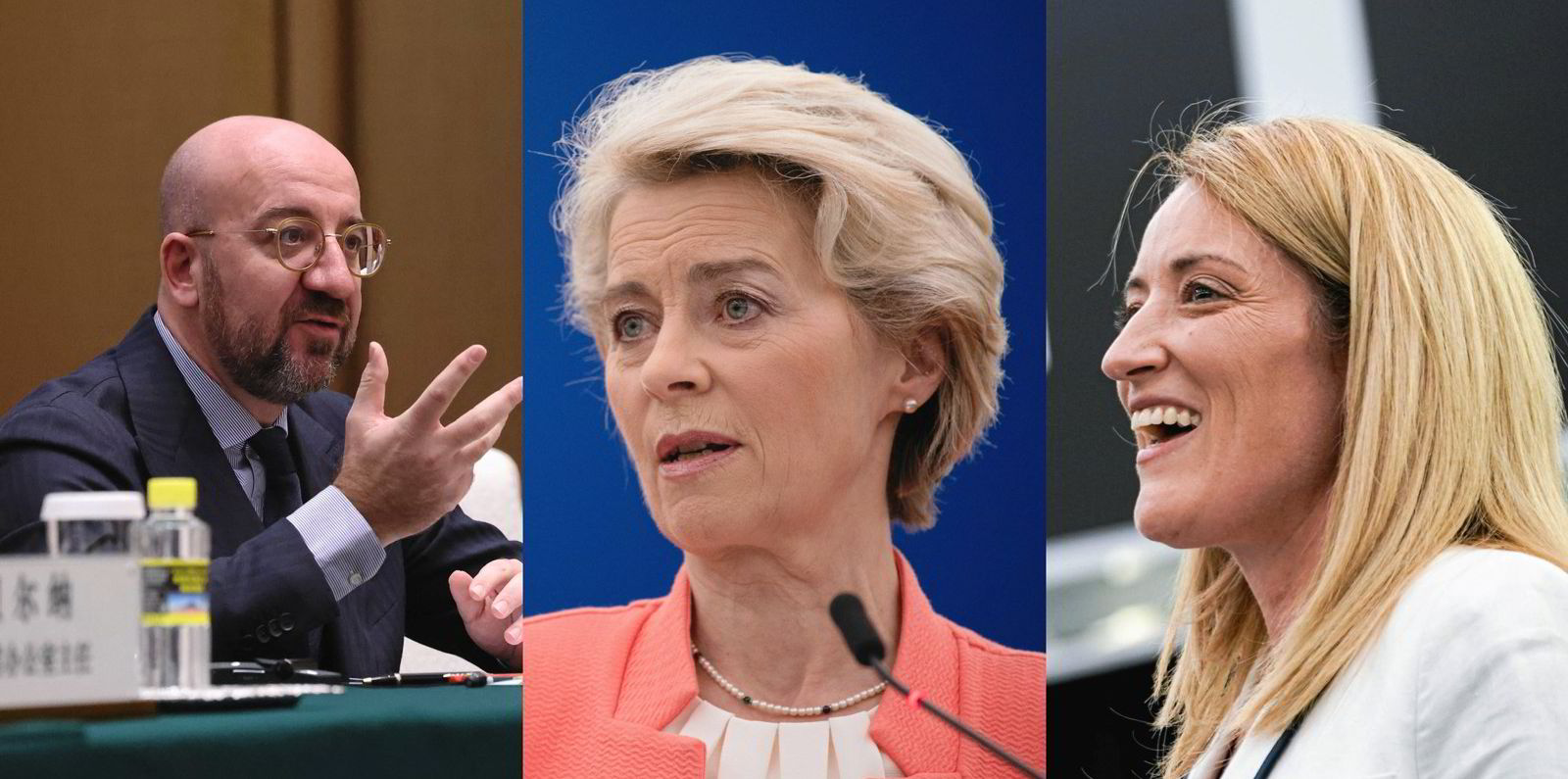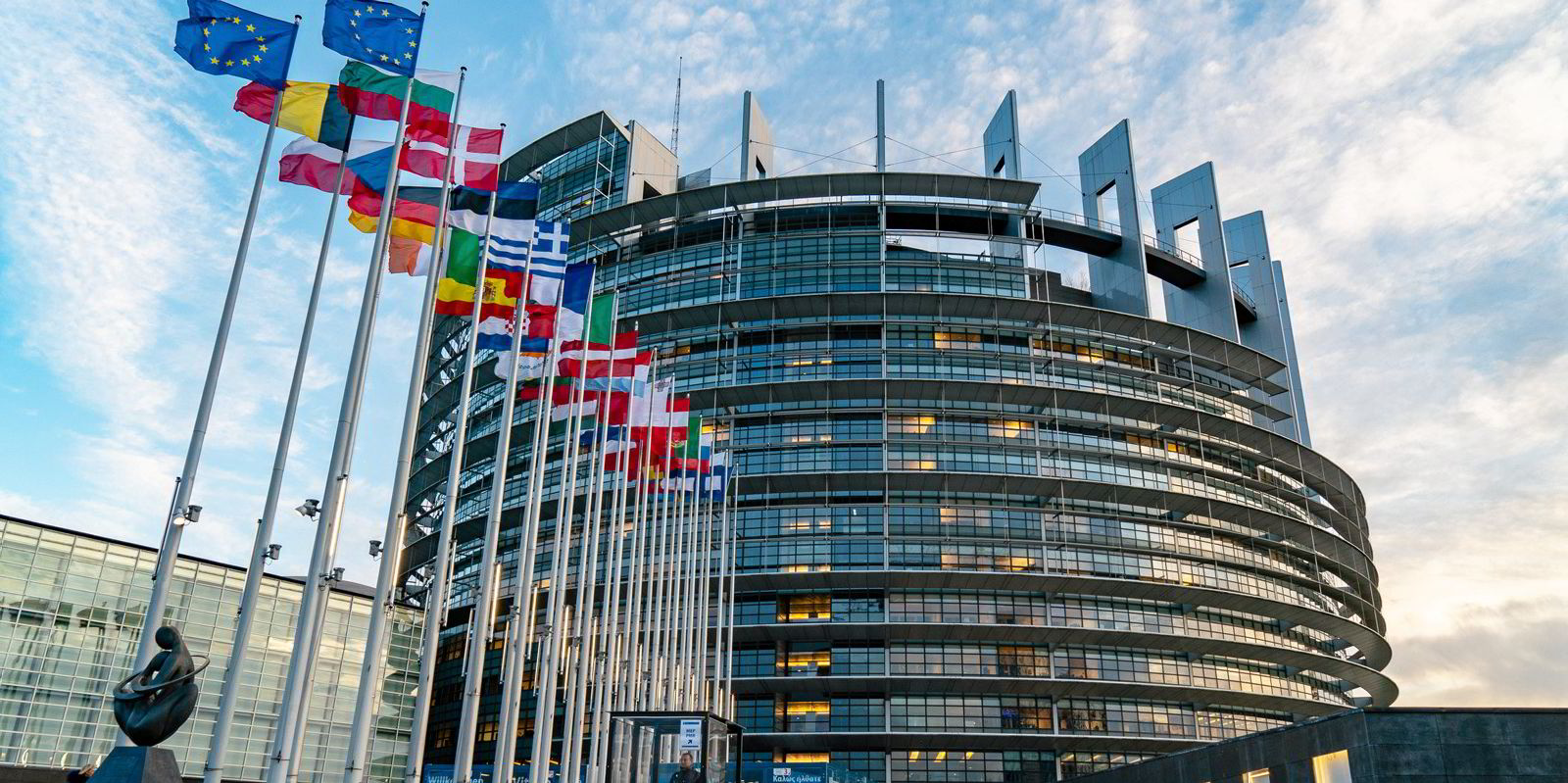Shipping’s first-ever inclusion into a carbon pricing mechanism has elicited positive reactions from the continent’s shipowners, although some groups still expressed a preference for global regulations rather than regional ones.
The reactions from European Union shipping groups came after policymakers agreed late on Tuesday to gradually include the maritime sector into the bloc’s Emissions Trading System — EU ETS — over a three-year period stretching into 2027.
“European shipowners welcome the outcome,” the European Community Shipowners’ Associations (ECSA) said in a statement.
In further details hammered out in so-called “trilogue” talks among the bloc’s three major institutions, at least €1.5bn ($1.56bn) of maritime-related emissions trading revenue is earmarked to fund research into shipping decarbonisation.
“The parliament and the council have embraced the calls of the industry stakeholders to earmark EU ETS revenues back to the maritime sector to support its energy transition,” ECSA secretary general Sotiris Raptis said.
ECSA also expressed its satisfaction with the deal enshrining a “polluter-pays” principle, under which shipowners can pass on emissions trading costs to charterers and commercial operators of vessels.
The agreement will be formally published and enter into force only in the coming weeks, when EU officials are set to agree on the scheme’s overall reform covering all of Europe’s industrial sectors.
According to sources, the maritime deal obliges ships’ owners and operators in 2025 to buy rights for 40% of verified emissions reported in the previous year. In 2026, the percentage rises to 70% and from 2027, all emissions will be covered.
Half of all emissions from trips between the EU and third countries, however, will be exempted.
“The phase-in period and the gradual inclusion of emissions from shipping over a three-year period is also crucial to ensure a smooth transition for the sector,” ECSA said.
What’s the downside?
The European shipping lobby did not comment on other details of the deal that may be more onerous to some owners.
Under the text agreed on Tuesday, emission monitoring and trading will be extended beyond CO2 to include methane and nitrous oxide as well.
The scope of vessels to be included has been widened as well, to include smaller ships.
General cargo ships and offshore vessels between 400 gt and 5,000 gt will be covered by the EU’s monitoring, reporting and quantification system known as EU MRV from 2025. By the end of 2026, the European Commission, which proposes and oversees the implantation of EU law, is set to present a report on whether to include those ships in the emissions trading scheme as well.
Offshore vessels of more than 5,000 gt will have to buy emission rights from 2027 onward.
The final version of the deal, which comes after more than a year of bargaining between EU governments, the European Parliament and the EC, represents a “more pragmatic and realistic” approach, the Cyprus Shipping Chamber said in a statement on Thursday.
Here are the contours of a deal in three-way negotiations by EU institutions that will phase shipping into the Emissions Trading System:
- The regulation will take effect in 2024, instead of the originally proposed 2023, although it will be phased in more quickly.
- 40% of CO2 emissions on European voyages in 2024 will have to be covered by carbon allowances. That rises to 70% in 2025 and 100% in 2026.
- Voyages connecting an EU port to a country outside the bloc will receive a 50% discount.
One reason the EU has legislated is to exert pressure on the International Maritime Organization to come up with its own carbon pricing mechanism.
Holding out the prospect of possible harmonisation with the IMO, the EU said that it will examine any possible measures adopted by the United Nations body and test its coherence.
That window to streamline EU legislation with the IMO is “crucial”, said the Cyprus Shipping Chamber, expressing its preference for a global, market-based carbon pricing measure at IMO level.
The German Shipowners’ Association expressed relief that the preliminary agreement in Brussels brings certainty, but chief executive Martin Kroeger made it clear that the group still favours a global solution to shipping’s carbon footprint.

“We welcome the fact that the long phase of uncertainty about the concrete design of the EU emissions trading scheme and its application to maritime transport has now come to an end and that shipping companies will be finally able to plan accordingly,” he said.
“However, with a view to achieving our ambitious climate targets, we are still of the opinion that an international market-based measure within the framework of the International Maritime Organization would be more effective.”
VDR, as the German association is known, would have liked to have seen more leeway in the phase-in period for the legislation.
“But we also understand that in the end a compromise must always be found,” Kroeger said.





